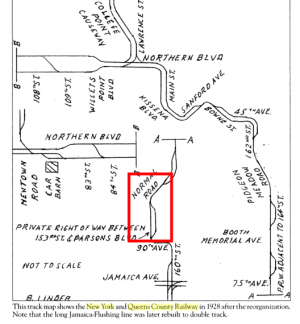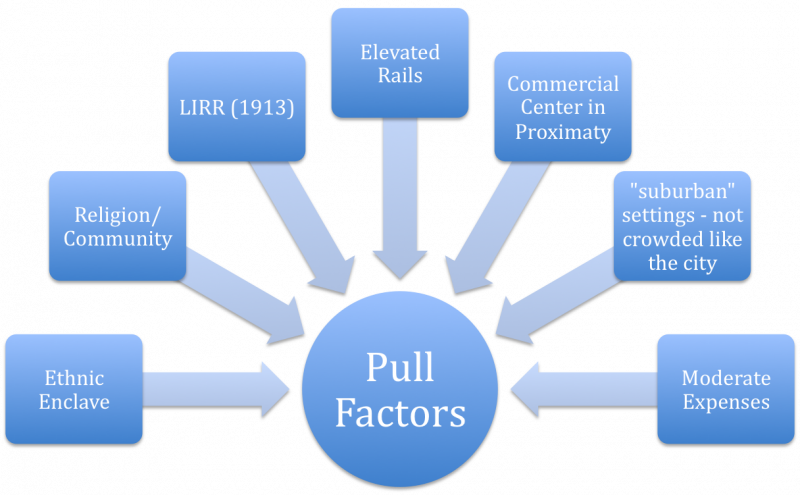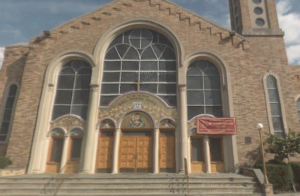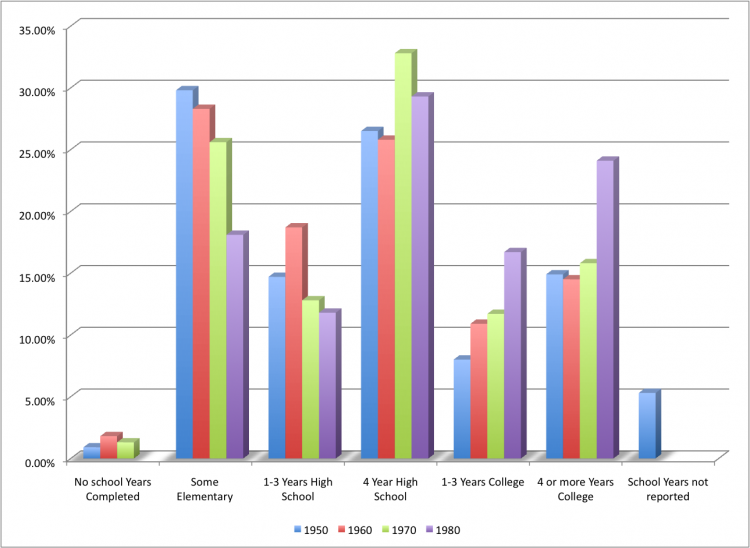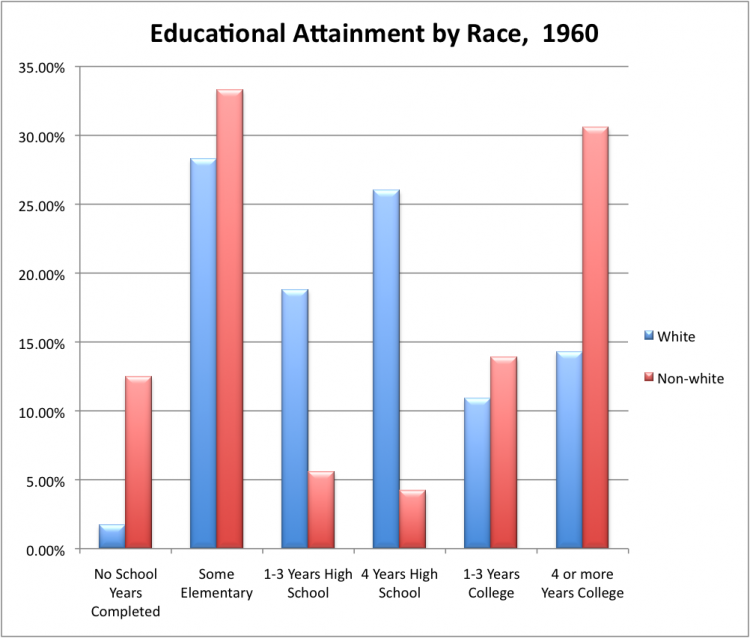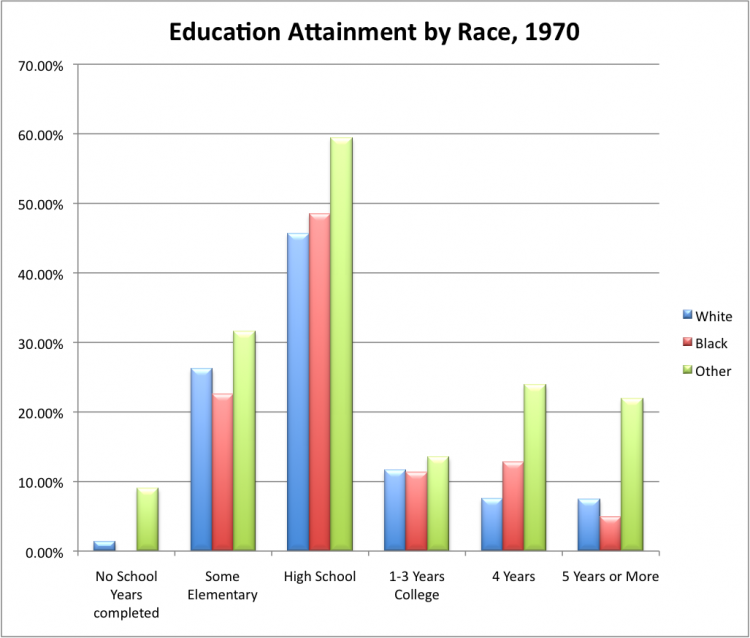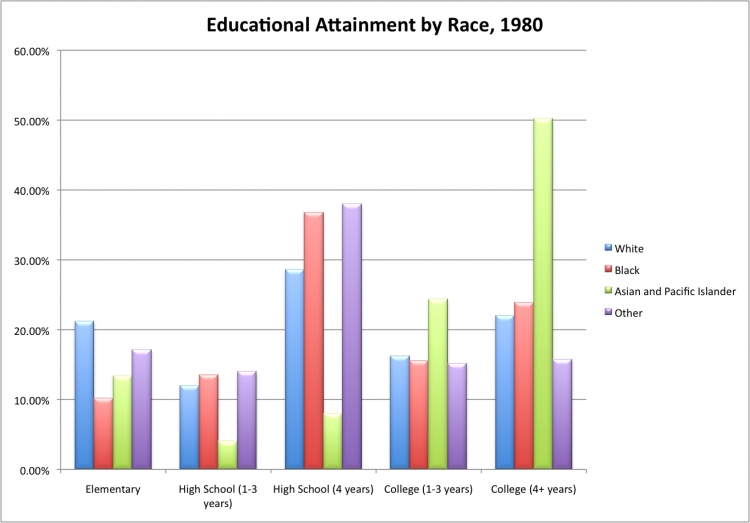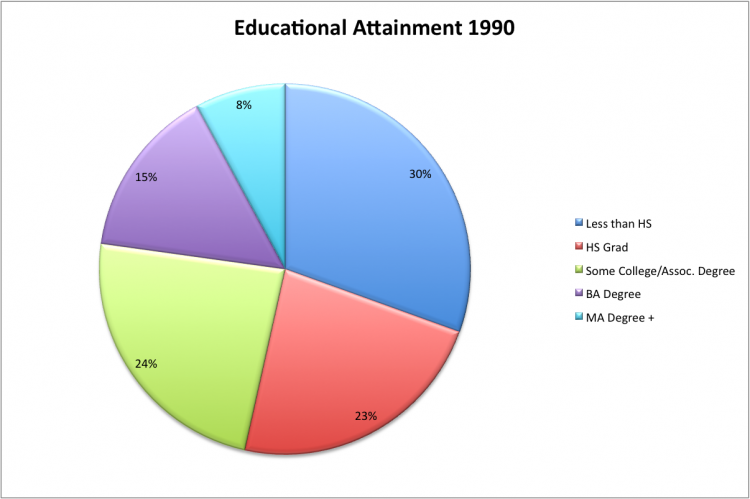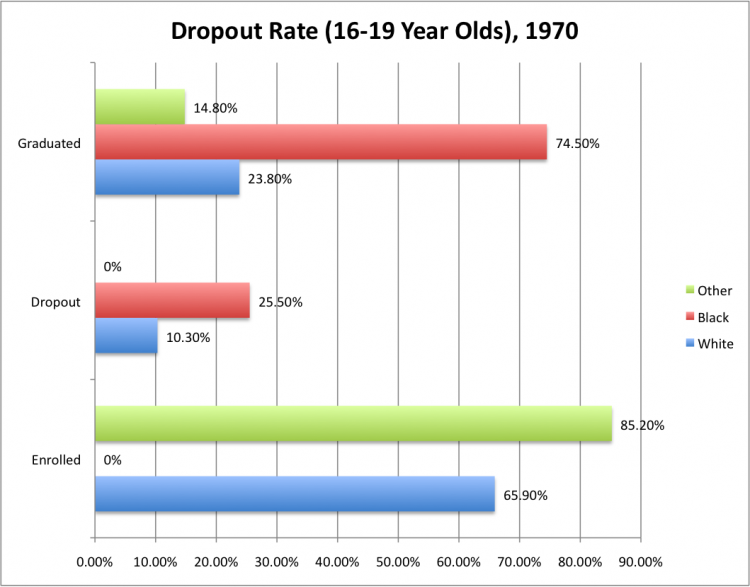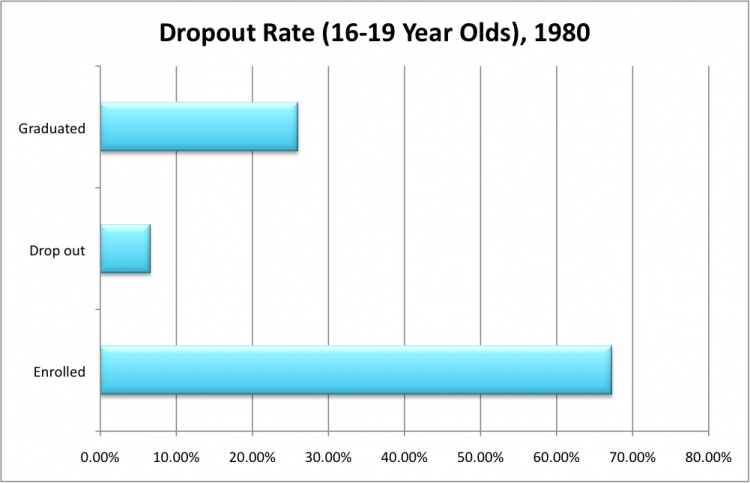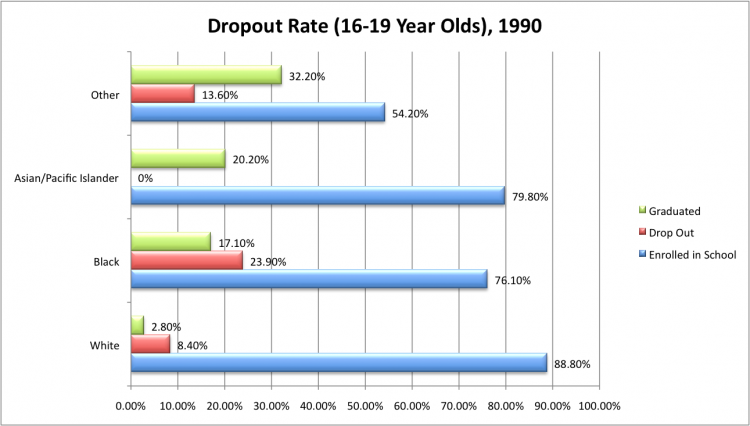Views
Contents |
Significant Change: Development of Jamaica Hills
General Jamaica Area
The general Jamaica area had always been a prominent area in Queens. "As roads were laid out, field cleared and homes built...small communities took shape." [1] Since the beginning Jamaica was growing as a commercial area with its first tannery in 1663. [2]
The census of 1845 showed Jamaica had a population of 3,883. Five years later, the population had increased to 4,247. Thirty years later, the population had increased more than two-folds to more 10,000 in 1880. [2]
Change comes to Jamaica Hills
While the greater Jamaica area was and continues to remain commercial, Jamaica Hills is predominantly a residential area. Jamaica Hills owes much of its development to the establishment of mass transit. Residential development began in the Jamaica Hills-Hillcrest area in 1909. Development continued into 1930s when the elevated line was brought to Fulton (Jamaica) Avenue, when Grand Central Parkway was opened in 1933, and the opening of the subway on Hillside in 1937. [3]
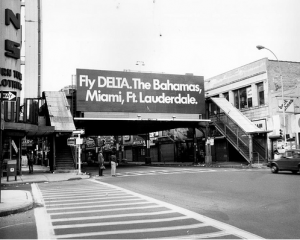
| 168th Street subway station on Jamaica Avenue and 168th Street. Service ended in 1977.[4] |
|---|
From Mansions to Middle Class
Initially Jamaica Hills was inhabited by well-to do elite. In the early 1900s mansions sprang up in Jamaica Hills[5] In 1895 there were hardly stores on Hillside Avenue and the houses were scattered.[6] One of the finest house on Hillside Avenue was that of Geroge E. Tilly opposite 162 street. Tilly was one of the leading real estate men of the period and a Methodist preacher. George W. Tilly, after which Captain Tilly Park is named after, belonged to this family.
The mansions then gave way to frame houses and multi-family apartments.[5] In 1910 Supreme Court Referee James C. Van Siclen built a 15-room mansion on 167th Street and Highland Avenue [7] In 1950, it was bought by Fred C. Trump, a Jamaica Estates builder, who erected an eight-story apartment house on part of the land the mansion was on.[7] Previously, Trump bought the Higbie Mansion which was alongside Tilly park stretching almost to the Jamaica High School Gate.[7]
One reason for this change was due to the advent of mass transit. In 1913 a Long Island Rail Road station opened in Jamaica. [8] Around this time trolley lines were also aided to increase the population in Jamaica Hills. Prior to the railroad and trolley lines, transportation was not easy to many small neighborhoods such as Jamaica Hills. In fact, Jamaica Hills was secluded before this time period. [9]
New York and Queens County Railway
One of the trolley lines to go through Jamaica Hills through what is today Normal Road was the New York and Queens County Railway. [8] Renamed in 1922 to New York and Queens Railway, this was the largest independent railway to operate in Queens and had lines going through Long Island City, Astoria, Woodside, Flushing, College Point, Jamaica and Manhattan. [10] However, by 1937, the company was pressured by the City of New York to replace its trolleys with buses because the city intended to build expressways on the trolleys' paths.[11]
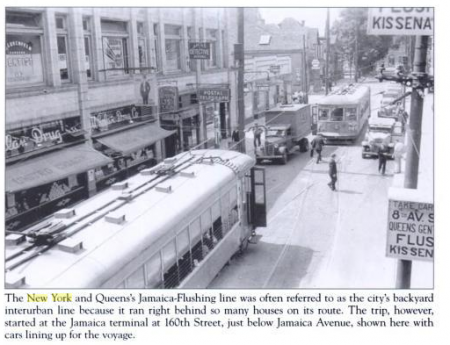
| 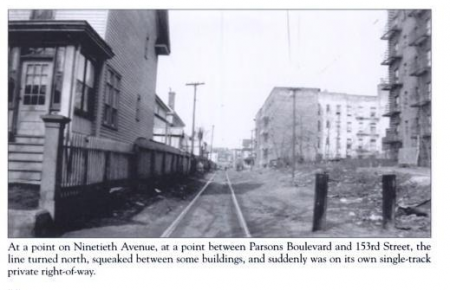
|
|---|
Significant Change in Jamaica Hills: Peopling of Jamaica Hills
Racial-Ethnic Makeup of the Neighborhood
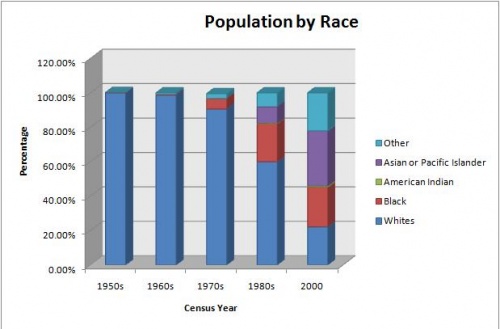
| Population by Race [13] |
|---|
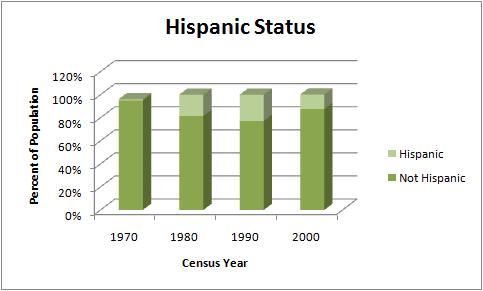
| Population by Hispanic Status [14] |
|---|
Since the colonial times, the Jamaica area like many neighborhood was predominantly white. However in recent decades the racial make up of neighborhoods is changing as the above graph suggest. One point to keep in mind is that earlier decades differentiated primarily based on black and white, as is in the case of the 1950 Census report. However, for the 2000 Census a greater variety of races were given as options such as American Indian, Asian or Pacific Islander which were not given in the Census of 1950.
Immigration
Top 6 Source Countries of Immigrants in Jamaica Hills[15]
| Source Country | # of migrants |
|---|---|
| Guyana | 55 |
| India | 24 |
| Haiti | 21 |
| Columbia | 17 |
| China | 16 |
| Philippines | 16 |
| Source Country | # of migrants |
|---|---|
| Guyana | 74 |
| Bangladesh | 35 |
| Philippines | 28 |
| India | 23 |
| Dominican Republic | 21 |
| China | 20 |
| Source Country | # of migrants |
|---|---|
| Guyana | 80 |
| Dominican Republic | 30 |
| Philippines | 27 |
| Pakistan | 19 |
| India | 17 |
| Bangladesh | 16 |
| Source Country | # of migrants |
|---|---|
| Guyana | 59 |
| India | 32 |
| Philippines | 27 |
| Dominican Republic | 20 |
| Haiti | 20 |
| Bangladesh | 19 |
| China | 19 |
| Source Country | # of migrants |
|---|---|
| Guyana | 61 |
| Bangladesh | 56 |
| India | 31 |
| Philippines | 25 |
| Pakistan | 22 |
| Honduras | 19 |
| Source Country | # of migrants |
|---|---|
| Bangladesh | 45 |
| Guyana | 31 |
| India | 25 |
| Pakistan | 20 |
| Ecuador | 14 |
| Haiti | 12 |
| Source Country | # of migrants |
|---|---|
| Bangladesh | 49 |
| Guyana | 39 |
| Pakistan | 29 |
| El Salvador | 22 |
| Haiti | 16 |
| India | 15 |
According to the charts above, prior to the mid 1990s the top source country for the region has been Guyana and other regions of the West Indies. Recent immigration statistics for recent years shows that there is a rise in Asian immigration to Jamaica Hills, primarily those of South Asian decent. From the South Asians, the predominant group are those from Bangladesh, many who are Muslim. "The 1970s brought an influx of residents from many nations and faiths", including many Muslim families to the area. [5] Jamaica Hills is home to one of the oldest Masjid in New York City, Jamaica Muslim Center, which was founded in 1976.[5] On any given day, one can see many Muslims rushing to the masjid when the time for prayer has come. Many people also move into the neighborhood to be close to the masjid. [16]
Immigration:Greeks
While Astoria is known for bring the most populated area with Greeks in Queens, Greek immigrants also settled in the Jamaica area.
Mass migration of Greeks began in the mid nineteenth century, who came to America with economic motives. [17] Once settled, they would write letters to male relatives to follow and come to America.[18] picture Initially, Greek immigrants settled in Manhattan and worked in factories, or were busboys, dishwashers and peddlers. [19] In the 1920s Greeks began moving away from Manhattan to Queens, including Jamaica. The first appearance of Greeks in Jamaica was in the 1920s with a population of 284. (Note:The Jamaica area defined by Peter Georgatos includes Jamaica Hills, Jamaica, South Jamaica, Briarwood, Hillcrest, Kew Gardens, and Kew Gardens Hills.[20]) What attracted many to the area, including the Greeks, was the extension of the New York City subway sytem to Jamaica in 1918. [21] Jamaica’s suburban setting and proximity to city was also an attraction[22] People were attracted to this suburban area becase they wanted to escape the over population of Manhattan. Because of mass transit, once is Jamaica they could travel to all parts of Brookln and Manhatan.[23]
Greek Immigration: Its Ups and Downs
Immigration of Greek immigrants to the United States declined after the passing of a 1921 immigration law which set annual quotas for immigrants. [24] While the overall population of Greek immigrants declined, the number of Greek immigrants increased in New York City and Queens. [25] By 1950 the Greek population declined in Queens, but the Greek population increased in the Jamaica area, possible to do the subway. [26] Between 1970 through 1990, the Greek community was on decline. [27]
Statistics
| Year | # of People |
|---|---|
| 1930 | 284 |
| 1950** | 366 |
| 1970 | 2406 |
| 1990 | 2100 |
| 2000 | 1633 |
**only foriegn born
The Community
"The basic organizational unit of the Greek immigrants was the kinotis or "community". [30]
For the Greek community of Jamaica, the church became the center of the community for the Greek Community of the Greek Orthodox Community of Saint Demetrios Church. In 1927 25 families of the Greek community organized the group “The Free Greek Community of Jamaica”. They organized a Greek Language Program in Normal School on Hillside Avenue. They moved to the Lutheran Church on Jamaica Avenue and then to P.S. 170, which is the present site of Hillcrest High School. [31] The old Saint Demetrios Church was in South Jamaica while the new Saint Demetrios Church is slightly west beyond the border of Jamaica Hills on 152nd Street. The church became a commuter church for the Greek community living easteard in Nassau County and Soffolk County becuase it was the only one in the area. [32]
1950s-1990s were the golden years of the Greek community of Saint Demetrios. “As the demographics of Jamaica changes and the successes of the community members afforded them more opportunity, many packed and departed.” [33] As of 2000 very few immigrants from Greece come to United States because econmic conditions of Greece has become better. In turn since the Greek community in Jamaica is not receiving new immigrants, the church and social institutions have become cripple and other ethnicities have moved into the area. [34]
| 1930 | % | 1950** | % | 1970 | % | 1990 | % | 2000 | % | |
|---|---|---|---|---|---|---|---|---|---|---|
| Total Population | 13943 | 40495 | 57886 | 58679 | 64383 | |||||
| Total Foreign Born | 3047 | 21.9 | 8296 | 20.5 | 15038 | 26.0 | 23298 | 39.7 | 31627 | 49.1 |
| White | 13844 | 99.3 | 39644 | 97.9 | 52548 | 90.8 | 36039 | 61.4 | 29999 | 46.6 |
| Black | 95 | .7 | 478 | 1.2 | 3530 | 6.1 | 8833 | 15.1 | 8871 | 13.8 |
| Other | 4 | 0 | 373 | .9 | 1808 | 3.1 | 13807 | 23.5 | 25513 | 39.6 |
| Greek Ancestry | 108 | .8 | 198 | .5 | 1533 | 2.6 | 1809 | 3.1 | 1350 | 2.1 |
Educational Attainment, 1950-1990 [36]
Dropout Rate, 1970-1990 [37]
References
- ↑ Wilson, John E. "Historic Central Queens: A Brief History of Jamaica and Surrounding Communities". Queens Civic Record. April 1939, pg 21. History of Jamaica. Volume 1. Queens Borough Central Library Long Island Division.
- ↑ 2.0 2.1 Sherwin, Mark. "Jamaica Owes Name to Indians' Beaver". Daily News. 9 Feb 1936. History of Jamaica. Volume 1. Queens Borough Central Library Long Island Division.
- ↑ "Jamaica Hill / Hillcrest Rezoning". New York City Department of City Planning. 23 March 2009. Government Website.
- ↑ Long Island Division's Photostream, Queens Borough Central Library
- ↑ 5.0 5.1 5.2 5.3 Copquin, Claudia Gryvatz. "Jamaica Hills". The Neighborhoods of Queens. New York: Yale University Press, 2007. 112.
- ↑ “Jamaica in 1895:Many Changes have Taken Place since that Time”. Long Island Press. 20 Jan 1938. Article in History of Jamaica. Part 1. Long Island Division. Queens Borough Central Library.
- ↑ 7.0 7.1 7.2 “Van Siclen Mansion Will be Razed to Make Way for Apartment House”. Long Island Press. 20 Jan 1938. Article in History of Jamaica. Part 1. Long Island Division. Queens Borough Central Library.
- ↑ 8.0 8.1 "Jamaica Hills: From Mansions to Muezzins". Forgotten-NY. 8 April 2009. [1].
- ↑ Copquin, Claudia Gryvatz. "Jamaica Hills". The Neighborhoods of Queens. New York: Yale University Press, 2007. 112.
- ↑ Meyers, Stephen L. Images of Rail: Lost Trolleys of Queens and Long Island. New York: Arcadia Publishing, 2006. pg 9.
- ↑ Meyers, Stephen L. Images of Rail: Lost Trolleys of Queens and Long Island. New York: Arcadia Publishing, 2006. pg 10.
- ↑ 12.0 12.1 Meyers, Stephen L. Images of Rail: Lost Trolleys of Queens and Long Island. New York: Arcadia Publishing, 2006. pg 24.
- ↑ "Census Tract 448, 450, 452, 454, 456, and 446.02 in Queens County, NY". 1950-2000. Social Explorer. 27 April 2009.
- ↑ "Census Tract 448, 450, 452, 454, 456, and 446.02 in Queens County, NY". 1950-2000. Social Explorer. 27 April 2009.
- ↑ Office of Immigration Statistics, US Dept. of Homeland Security, InfoShare Website.
- ↑ Shaman, Diana. "If You're Thinking of Living In/Jamaica Hills; Tranquil Haven for Many Ethnic Groups". NY Times. 8 June 2003. NY Times
- ↑ Moskos, Jr., Charles C. Greek Americans: Struggle and Success. Englewood Cliffs: Prentice-Hall, Inc., 1980. p 10.
- ↑ Moskos, Jr., Charles C. Greek Americans: Struggle and Success. Englewood Cliffs: Prentice-Hall, Inc., 1980. p 12.
- ↑ Moskos, Jr., Charles C. Greek Americans: Struggle and Success. Englewood Cliffs: Prentice-Hall, Inc., 1980. p 13.
- ↑ Georgatos, Peter. “Greek Community of Jamaica Queens: The Rise and Decline, 1927-2004”. MA Bachelor’s Thesis. Queens College. June 2004. p 50.
- ↑ Georgatos, Peter. “Greek Community of Jamaica Queens: The Rise and Decline, 1927-2004”. MA Bachelor’s Thesis. Queens College. June 2004. p 37.
- ↑ Georgatos, Peter. “Greek Community of Jamaica Queens: The Rise and Decline, 1927-2004”. MA Bachelor’s Thesis. Queens College. June 2004. p 56.
- ↑ Georgatos, Peter. “Greek Community of Jamaica Queens: The Rise and Decline, 1927-2004”. MA Bachelor’s Thesis. Queens College. June 2004. p 37.
- ↑ Georgatos, Peter. “Greek Community of Jamaica Queens: The Rise and Decline, 1927-2004”. MA Bachelor’s Thesis. Queens College. June 2004. p 40.
- ↑ Georgatos, Peter. “Greek Community of Jamaica Queens: The Rise and Decline, 1927-2004”. MA Bachelor’s Thesis. Queens College. June 2004. p 40.
- ↑ Georgatos, Peter. “Greek Community of Jamaica Queens: The Rise and Decline, 1927-2004”. MA Bachelor’s Thesis. Queens College. June 2004. p 40-41.
- ↑ Georgatos, Peter. “Greek Community of Jamaica Queens: The Rise and Decline, 1927-2004”. MA Bachelor’s Thesis. Queens College. June 2004. p 44
- ↑ Georgatos, Peter. “Greek Community of Jamaica Queens: The Rise and Decline, 1927-2004”. MA Bachelor’s Thesis. Queens College. June 2004. p 50
- ↑ Includes the areas: Jamaica Hills, Jamaica, South Jamaica, Briarwood, Hillcrest, Kew Gardens, and Kew Gardens Hills
- ↑ Moskos, Jr., Charles C. Greek Americans: Struggle and Success. Englewood Cliffs: Prentice-Hall, Inc., 1980. p 33.
- ↑ Georgatos, Peter. “Greek Community of Jamaica Queens: The Rise and Decline, 1927-2004”. MA Bachelor’s Thesis. Queens College. June 2004. p 57.
- ↑ Georgatos, Peter. “Greek Community of Jamaica Queens: The Rise and Decline, 1927-2004”. MA Bachelor’s Thesis. Queens College. June 2004. p 63.
- ↑ Georgatos, Peter. “Greek Community of Jamaica Queens: The Rise and Decline, 1927-2004”. MA Bachelor’s Thesis. Queens College. June 2004. p 46.
- ↑ Georgatos, Peter. “Greek Community of Jamaica Queens: The Rise and Decline, 1927-2004”. MA Bachelor’s Thesis. Queens College. June 2004. p 102.
- ↑ Georgatos, Peter. “Greek Community of Jamaica Queens: The Rise and Decline, 1927-2004”. MA Bachelor’s Thesis. Queens College. June 2004. p 101.
- ↑ "Census Tract 448, 450, 452, 454, 456, and 446.02 in Queens County, NY". 1950-2000. Social Explorer. 27 April 2009.
- ↑ "Census Tract 448, 450, 452, 454, 456, and 446.02 in Queens County, NY". 1950-2000. Social Explorer. 27 April 2009.
